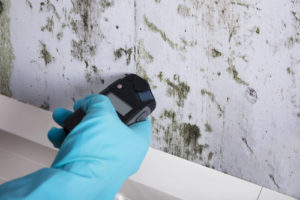
Water damage can really wreak havoc if it seeps into all pores of your house. The biggest problem is spotting it all, as not every type of damage is visible directly. Water damage repair Orange County professionals can fix various types of damage and have the experience to take care of all kinds of necessary interventions. Among other things, they know just how to dry out wet walls and other parts of the household.
You might want to try your hand at remedying the consequences yourself, but the clean-up and restoration process isn’t as simple as it may seem. The damage comes fast and without warning and is relentless unless treated by an expert hand. Here’s what experts usually do!
Finding the source
This is important because the extent of damage depends on where it came from and how fast you find the source of water. Some small leaks and overflowings don’t require water to be shut off, but larger ones are more dangerous and you might need the help of a plumber. When the source has been cut off, it’s easier to determine the level of damage and start the drying process.
How to dry out wet walls – removing standing water
When the water source has been dealt with, the next step is getting rid of all the standing water. This will further limit the extent of water damage and needs to be done as soon as possible. You can try to do this yourself, but only professional technicians possess the modern equipment such as pumps and industrial vacuums, which speed up the process. The time saved can be crucial for the next steps.
Extracting damaged materials
There are some types of walls, such as drywalls, which can crack or crumble easily and they usually need to be removed after water damages them. An important part of how to dry out wet walls is determining which parts need to be removed and which can be dried out. This might also include some parts of floor and ceilings, depending on the surroundings.
Drying out the rest
The whole area should be thoroughly dried and this is where industrial blowers and dehumidifiers which are highly efficient come in handy. Professional teams have this kind of equipment which helps preserve all types of walls. They also know how to take care of the ventilation, humidity and heat, as well as that drywall requires special attention.
Sanitizing and repairing
Some damaged areas of walls can be salvaged, but they still might require small repairs. This can be done with drywall tape and certain special compounds. After this is done, sanitizing the area removes odors and prevents the appearance of mold or mildew in the future. The final touch can be repainting the damaged area or putting up wallpapers over it.
EHS knows just how to dry out wet walls
Before you try to tackle the complex task of drying a wall by yourself, remember that you don’t have to. Remedying water related issues and damage is at the core of what Emergency Home Solutions does. We are well-equipped for every type of intervention, acting swiftly and decisively to minimize the damage to your home. Our experienced technicians are only a call away whenever you need them!
